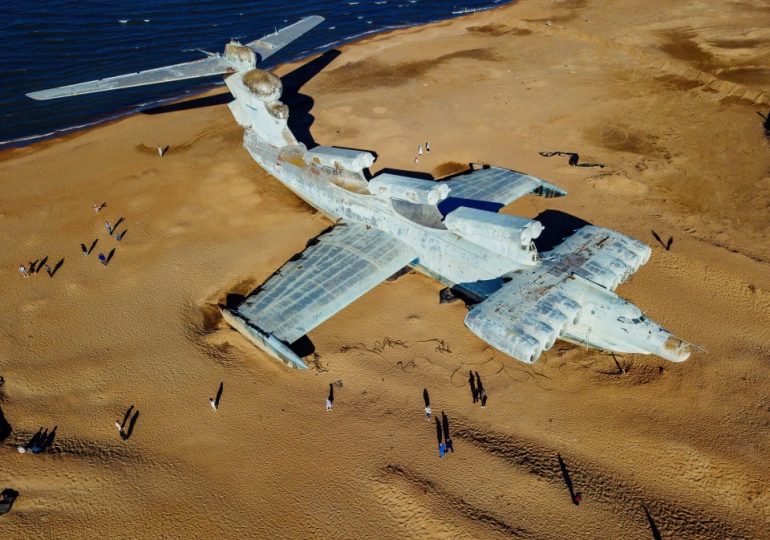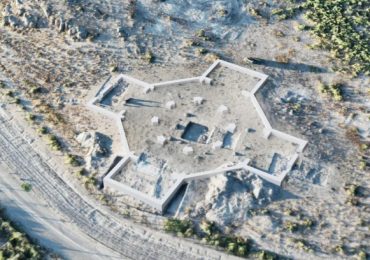ALTHOUGH now abandoned and rusting, the 302ft Soviet megaplane Caspian Sea Monster was once a force to be reckoned with.
The formidable ekranoplan, bigger than a Boeing 747 and armed to the teeth with missiles, is beyond unique with eight huge jet engines.
GettyThe Soviet Lun-class ekranoplan lay dormant on the coast of the Caspian Sea for more than 30 years[/caption]
The Sea Monster carried six anti-ship missiles in launch tubes at the top of its hull
The hybrid ship-aircraft, officially named Korabl Maket, was built by the Soviet Union during the Cold War and weighed 240 tonnes when empty, with a 72ft height, a 123ft wingspan, and a top speed of 310mph.
It was an experimental vehicle developed in the 1960s and intended to attack Nato nuclear submarines and aircraft carriers.
The machine first entered service in 1966 and was continuously tested by the Soviet Navy, until it crashed in the Caspian Sea in 1980.
It was decommissioned when the Soviet Union collapsed in the early 1990s and lay dormant for more than three decades at Kaspiysk naval base, about 62 miles up the coast from Derbent.
But in July 2020, the Sea Monster was dragged by three tugs and flanked by two escort vessels through the shores of the Caspian Sea to a stretch of coast near Russia‘s southernmost point, in what would likely be its final journey.
The massive ship-plane is now beached as a “museum” in Derbent.
The fire-breathing aquatic beast is perhaps one of the weirdest-looking machines ever built, with four engines stacked in a row on each of its wings.
It carried six anti-ship missiles in launch tubes at the top of its hull, which could travel up to 60 miles at three times the speed of light.
American spies were once convinced that the ekranoplan – or ground effect vehicle – could be used for laying mines, as well as for anti-submarine warfare and search and rescue operations.
In the 1980s, the Soviet Union wanted to build eight of the machines to take on US Navy warships, according to naval warfare expert H.I. Sutton.
He said the Sea Monster was “impressively fast and heavily armed” which was “a classic super weapon of the Cold War”.
Ekranoplans such as the Korabl Maket move over water without actually touching it, ordinarily skimming the surface at heights of between three and 16 feet.
Their proximity to the surface of the water while flying makes them difficult to detect by radar; it is an aerodynamic advantage called “ground effect”.
The Sea Monster was capable of taking off and landing in storm conditions, with waves of up to eight feet, and never flew 30ft above sea level – meaning it was technically considered a ship.
In its heyday, the Lun-class ship-plane was manned by a crew of 15: six officers and nine sailors.
The US feared at the time that it would bring a “new dimension to naval surface warfare”.
A second Sea Monster was designed for rescue and supply missions and was nearly completed by the early 1990s – but the project was scrapped when the Soviet Union collapsed, at the same time the existing ekranoplan was withdrawn from service.
GettyAfter over 30 years in the military port, the Caspian Flotilla presented the ekranoplan to the city of Derbent[/caption]
WENNThe massive ship-plane is now beached as a ‘museum’ in Derbent[/caption]
Leave a comment








